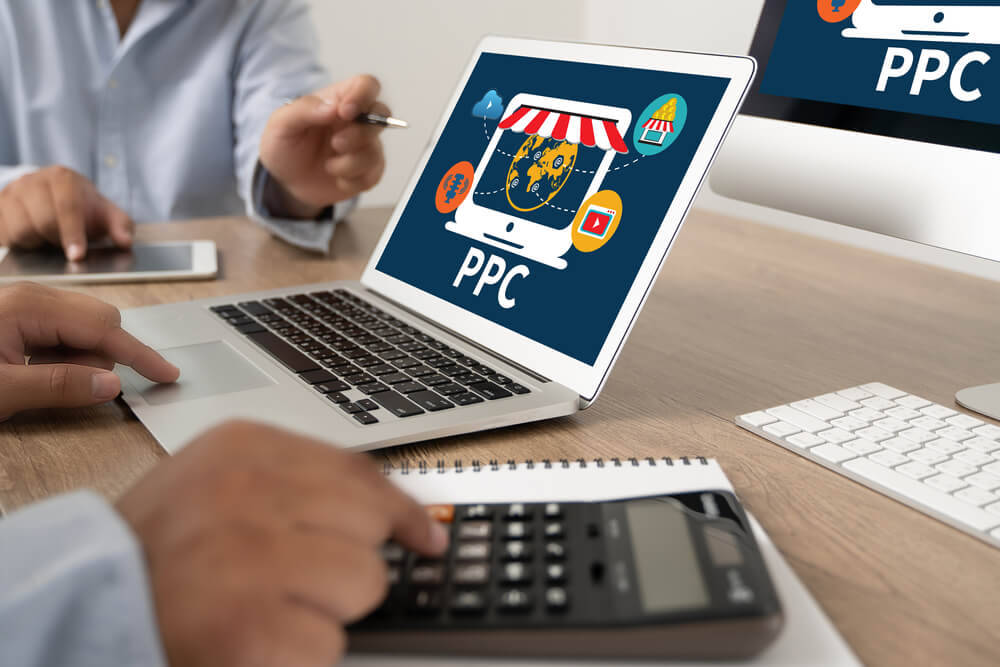
B2B PPC Marketing: Guide to 5 Essential Strategies
One of the ways a business-to-business (B2B) company promotes products or services is through paid advertising. With paid ads, a business shows clients that they have the solution to their issues and answers to their questions. But to get clients to click ads, these companies need a solid strategy.
This is where a PPC agency comes in. A PPC agency provides excellent paid ads strategies, including the following:
- Use of negative keywords
- Advantages of acronyms
- PPC strategies adaptable to different platforms
- Call extensions
- Whether you can rely on conversions
Read on to learn more about these five strategies. Let’s go!
Want to learn how Digital Authority Partners can increase your PPC effectiveness? Watch this video!
1. Build Your Negative Keywords List

Effective paid search management involves expanding and refining keywords to maximize relevance and return on investment (ROI). You must ensure your ads don’t appear on irrelevant search queries because this hurts your spending. This is where negative keywords come in.
So how do you use them?
- Determine irrelevant keywords for which your ads appear. Let us say your ad is about “kitchen pots and pans.” It keeps appearing in searches that use “flower pots” as keywords. That means “flower pots” is one of your negative keywords. Your ad appears for it, but the searchers do not really need your product or service.
- Brainstorm and research negative keyword ideas. Before your ad launches, brainstorm and research possible negative keywords for which your ads might appear. These could be words or phrases synonymous with or sounds like your target keyword.
- Add or encode negative keywords into the Google Ads or Bing Ads platform. These platforms then ensure that your published ads will not appear in search queries about any of your listed keywords.
- Add negative keywords at different campaign levels and different match types. You may add negative keywords on the account, campaign, or ad group levels. You can also set match types as broad or as an exact match. You will see these options as you set up your negative keywords on Google Ads or Bing Ads.
2. Take Advantage of Acronyms
B2B advertising often uses acronyms, especially when a business is in the manufacturing or technology industry. Using industry-specific acronyms makes it easier to target the right audience and extend your reach with well-written ad copy.
But using acronyms has its downsides. These could be troublesome if your acronym stands for another thing. For example, using SMB or “small and midsize business” could be mistaken for “Special Mens Business." You could end up paying for incorrect clicks instead of targeting small and midsize business owners.
Research your clients and see who is using these market or industry acronyms. Here are more tips to take advantage of acronyms in your PPC ads.
- Use acronyms known in your field. This avoids confusion and helps your audience better understand your ads and offers.
- Look for updated acronyms in your industry. Technological trends change, and newer and more appropriate acronyms may exist.
- Follow acronym rules in creating ad copies. Standard acronyms and abbreviations like units of measurement do not need to be spelled out even at first mention.
3. Adjust and Adapt Strategies According to Platform

PPC platforms use similar bidding and auction systems. However, they have unique settings. That means a single ad campaign design will not fit all the platforms. You must adjust your PPC strategies or campaigns depending on each platform you will use.
For example, social media sites like Facebook are not the top platforms for targeting B2B companies, but they help stimulate discussion and interaction. LinkedIn is better at reaching more professional audiences. So your LinkedIn ad designed for B2B, for example, might not succeed on Facebook unless you adjust to match Facebook users.
Here are some popular networks where you can build your ad campaigns.
- Amazon Ads. Amazon is an e-commerce platform and a search engine. Users head to Amazon to research products that they need. Amazon ads work like Google, focused on keywords and product categories. Adjust your strategies by choosing from Amazon headlines, sponsored products, and display ads.
- Google Ads. This is the largest ad platform. More than 20 million businesses in the US used it in 2021. Marketers prefer Google because they can adjust keyword bidding strategies using its automatic features. Google is so popular you can target customers in many regions, countries, and cities.
- Bing Ads. Though not as popular as Google, Bing still gets millions of users daily. And its ad costs are cheaper than Google Ads. Adjusting your strategies is easy, especially when you use social media with social extensions. Bing also gives you a better chance of ranking higher on search results to target older customers.
- Facebook Ads. It has more than 3 billion active users monthly as of the third quarter of 2022, making it the most popular online social media platform worldwide. Although not preferred by B2B companies, its size makes it a good place to promote products and services.
- Twitter Ads. With a Twitter account, your B2B company can connect with professional clients and audiences. Adjusting your strategies is easy, especially when targeting people who have previously engaged with your brand through its retargeting features.
- YouTube Ads. YouTube is the most popular video-sharing site worldwide and the best venue to promote your business with video ads. Your ads on YouTube mean you can reach billions of users everywhere. You can improve your ad targeting using demographics, keywords, interests, and topics.
4. Add Call Extensions
Call extensions help your clients contact you immediately through your ad. You can also better understand the effectiveness of your campaigns through the number of phone calls generated by your ads.
This ad extension or feature allows you to add information about your business to your text ads. In this case, add your business phone number. Call extensions increase the click-through rate (CTR) and turn callers into clients.
If you want to add call extensions to your B2B PPC ad, you must set up the following:
- Have a representative answer your phone. For a 24/7 ad, hire someone to answer calls to avoid missing any calls, even in the middle of the night. But you can also set ad extensions to show only at specific times of the day.
- Track your phone calls. Use Google Analytics (GA) to track calls or third-party tools like CallRail to give you more details about your calls.
- Prefer call-only campaigns. Enabling this feature means the only clickable part of your ad is your business phone number.
- Use location extension with a call extension. Doing so gives you better targeting results and a much broader reach. You can get phone call data from different location extension ads if your business spans many time zones. You can find which extension type is doing better than others.
5. Don’t Rely on Conversions

PPC offers better conversion tracking, which is why most B2C companies refer to their conversion metrics to define the success of their ads. But this is not how it goes with B2B companies.
B2B PPC provides more micro conversions than macro conversions. Completing a subscriber form is a micro conversion, while ordering a service or buying a product is a macro conversion. Although a B2B customer may have filled out a form and become a lead, they may still convert through another channel.
This is why you cannot rely on ad conversions alone to identify the success of your ad. Look at other key performance indicators (KPIs), like your lead scores and demographics. Some KPIs are not directly accessible from the PPC platform you use. It is best to use Google Analytics to track valuable data.
You can outsource PPC campaigns, monitoring, and reporting to get the best results. Find out the right way to choose a good PPC partner here.
Summing Up
Focus on the right tactics to create a better, more effective B2B PPC campaign. Use negative keywords, take advantage of acronyms, and add call extensions. Adjust PPC strategies according to the platform and monitor your KPIs, not just ad conversions.
These techniques immediately take your ad to companies and clients needing your services and products.
Do you have questions about B2B PPC? We can help! Contact Digital Authority Partners today.
Want To Meet Our Expert Team?
Book a meeting directly here




